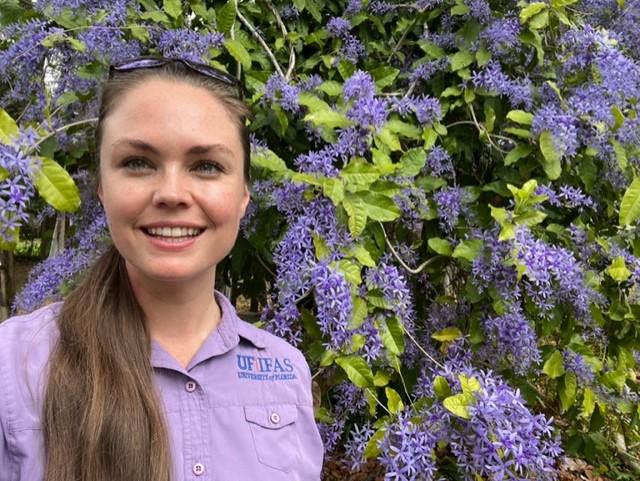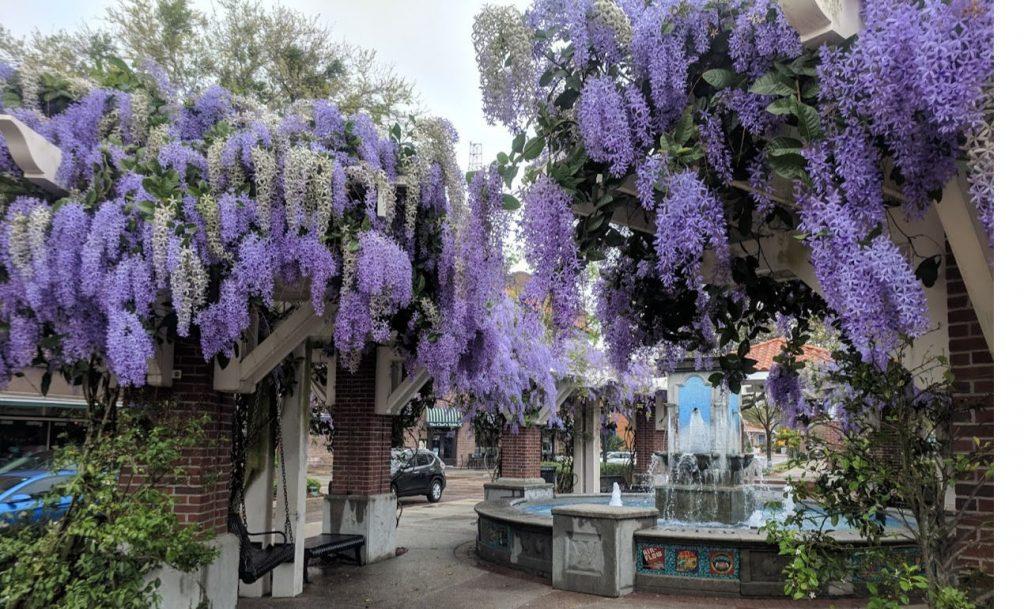The Queen is dripping. The waterfall of purple flowers cascading over trellises and featured in spring selfies is known as Queen’s Wreath. This tropical vine commands attention. Wrapping and twining up a supporting structure, these sandpapery leaves remain evergreen until the flowers compete for the spotlight.
Queen’s Wreath is known scientifically as Petrea volubilis and is well suited for growing in Central Florida (Zone 9B) and south. It looks like Wisteria but is much more well behaved. Wisteria, both the Chinese and Japanese species, are terribly invasive in the Southeastern United States because they grow aggressively, outcompeting important trees and shrubs, ultimately killing them.
If you want a gorgeous vine dripping with flowers, go with Queen’s Wreath, also known as Sandpaper Vine, because the leaves do have a notable sandpapery texture. Native to the Neotropics, Sandpaper Vine graces gardens from Mexico to the Caribbean and to South America. It is a fine fit to La Florida, the land of flowers!
The flower power is profuse from February through June in Florida. Even once the flowers fall, the purple calyx that held the flower remains. Though technically not the flower anymore, the Queen’s Wreath calyx looks like a flower to the untrained eye. This is a lovely feature that prolongs the purple Petrea party.
Situate the plant near something supportive in full sun or partial shade. A trellis, arbor, or fence will make a good companion. The vine can be pruned into compliance, or let it run up to 40 feet! The vine will take advantage of a tree trunk, too, but make sure she does not take too much advantage, resulting in strangling the tree to death. The twining vine does not damage walls. It is tolerant of frost, but not a hard freeze. Once the vine has established, it can handle wet and dry seasons as long as the soil is well drained. Speaking of soil, Queen’s Wreath is adapted to alkaline soils, common in many parts of Florida.
This is a plant worth sharing. It does produce slow to germinate seeds. Cuttings and air layers may be the best bet at passing along the purple Petrea. Keep the queen healthy by keeping the grass away from the trunk. It should also be mentioned there is a white version of this fine vine. While there are no major pest problems, it never hurts to scout for unwelcome critters. On the subject of critters, pollinators are buzzing, “All hail the Queen!,” enjoying the almost obnoxious floral display.
Make a date with the Queen’s Wreath! Here in Central Florida there are two prominently located vines and now is the time to dance in the purple rain. Stroll down Plant Street in Winter Garden, or Park Avenue in Winter Park if only to peep at the weeping Petrea.

 5
5
